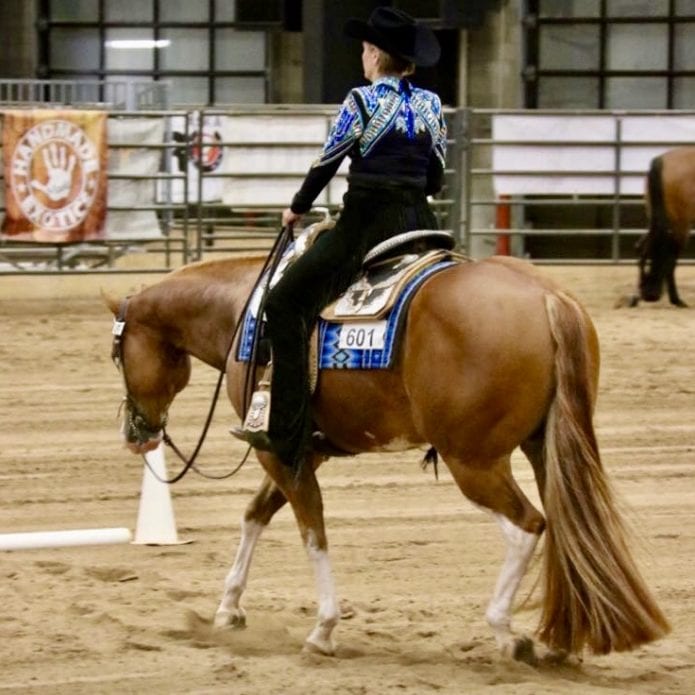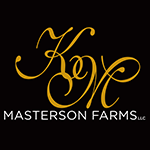Often called one of the toughest classes, western riding is beautiful to watch and a thrill to show. It is an extremely technical class where pace, timing and well-executed lead changes come together in a series to make up one of several patterns outlined in the rulebook.
When you see a pattern that is executed with credit-earning lead changes, great flow and a horse and rider team that work together throughout the pattern, you know they’ve studied the rulebook and put in the time to build a partnership.
But what are some of the unwritten rules of western riding that you won’t find in the rulebook? How can you elevate your performance and patterns to reach the next level? We talked to Ryan Kail of Kail Quarter Horses in Scottsdale, Arizona to come up with the five unwritten rules of western riding to keep in mind the next time you walk to the start cone.
Don’t overlook the log
In every western riding pattern, you have to cross the log twice – once at the jog and once at a lope. Many horses that show in the western riding also show trail and go over multiple logs all the time. However, that doesn’t mean that this maneuver should be overlooked. The log is an opportunity to make up a mediocre lead change or another way to increase your score. Ryan told us, “If you are coming at the log on your left lead, you want to put the left front foot, right in front of the log. Check your spacing about four to five strides out and then look up. If you keep looking at the log, you’ll be too close to make any adjustments.” Many seasoned horses will rate the log on their own. However, a strong rider will check the approach to the log and rate the horse appropriately and not let their horse merely take them to it.
Be sure to have good transitions
In any class, a correct and proper transition will set you up for success on your next maneuver. The same unwritten rule applies to western riding. The change from the walk to the jog is essential as this sets the cadence in which you approach the log. Too slow and your horse might tick the log as they jog over. Too fast might force you to adjust your pace which you want to avoid this early in your pattern. “Your lope departure is a scored maneuver and also sets the tone for your speed and flow, so be sure to practice your jog to lope transitions to turn these into credit earning parts of the pattern,” Ryan said.
Use your walls
The walls of the arena or fence rails can be a saving grace in a pattern, especially when your horse starts to anticipate or get a little speedy. “To have a pretty change, your horse has to be straight. Riding straight to the walls during your crossover changes will help keep your horse’s body in alignment which will result in a cleaner lead change, and it will prevent your horse ducking and diving around the cones and into the turns,” Ryan told us. Thinking of your turns as a rounded square corner instead of a circle, will ensure your horse doesn’t drop its inside shoulder, and you don’t cut your pattern too tight to the cones.
Ride into the change
Western riding is a class with forward motion, so your lead changes should have forward movement as well. Ryan reminds us, “Be sure to ride strong into and through your change. Your horse will have a hard time changing leads cleanly if you allow your momentum to slow down.” Keeping in time with your horse and its stride will help you to find your balance and rhythm with your cues and changes. Flow and cadence are essential to a western riding pattern and continually changing speeds will weaken the overall picture, no matter how pretty your changes are.
Look where you want to go
Especially to the newcomers or novice riders, a western riding pattern can feel like a blur. A good rule is to look where you want to go. “Know the pattern well so you aren’t second-guessing what you should be doing next. The pattern can go by quickly, and those lead changes down the line come up fast. But, if you break the pattern down in sections and look ahead, you’ll be prepared for your next move,” Ryan said. Many riders have different methods but counting your strides once you get to the cone can help keep you on track and on time with your changes. Looking ahead and directly where you want to go will help your body and your horse follow suit.
Julie Hoefling was born and raised in Akron, Michigan but now resides in Cave Creek, Arizona with her husband, Jerry. She works at Kahala Brands as a Director of Marketing. Julie shows her horse, Shady Impulse in the Western All-Around events under the guidance of Ryan and Andrea Kail.








